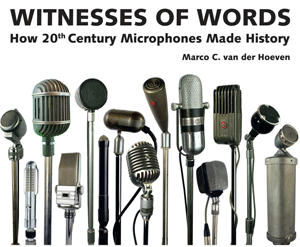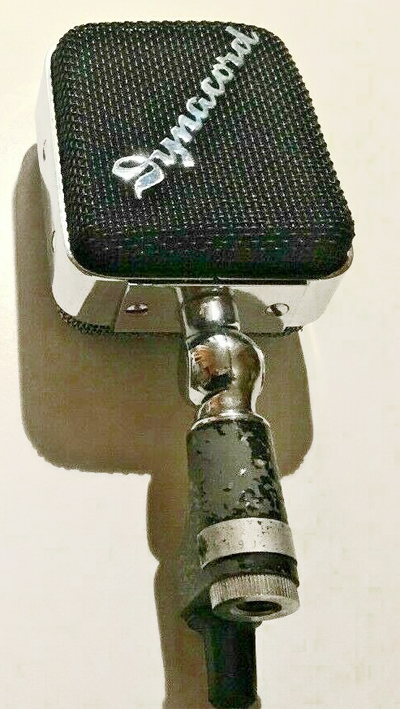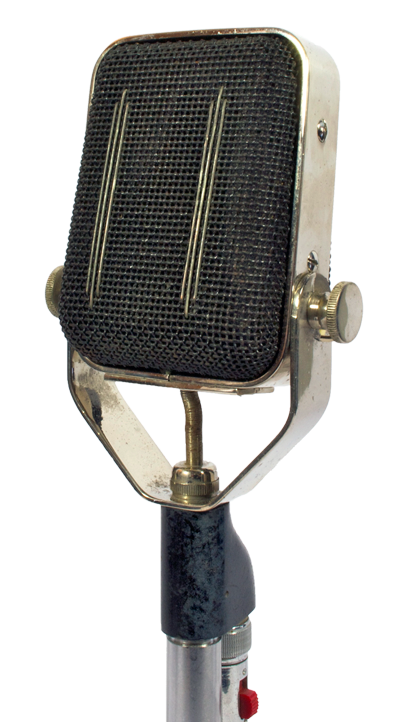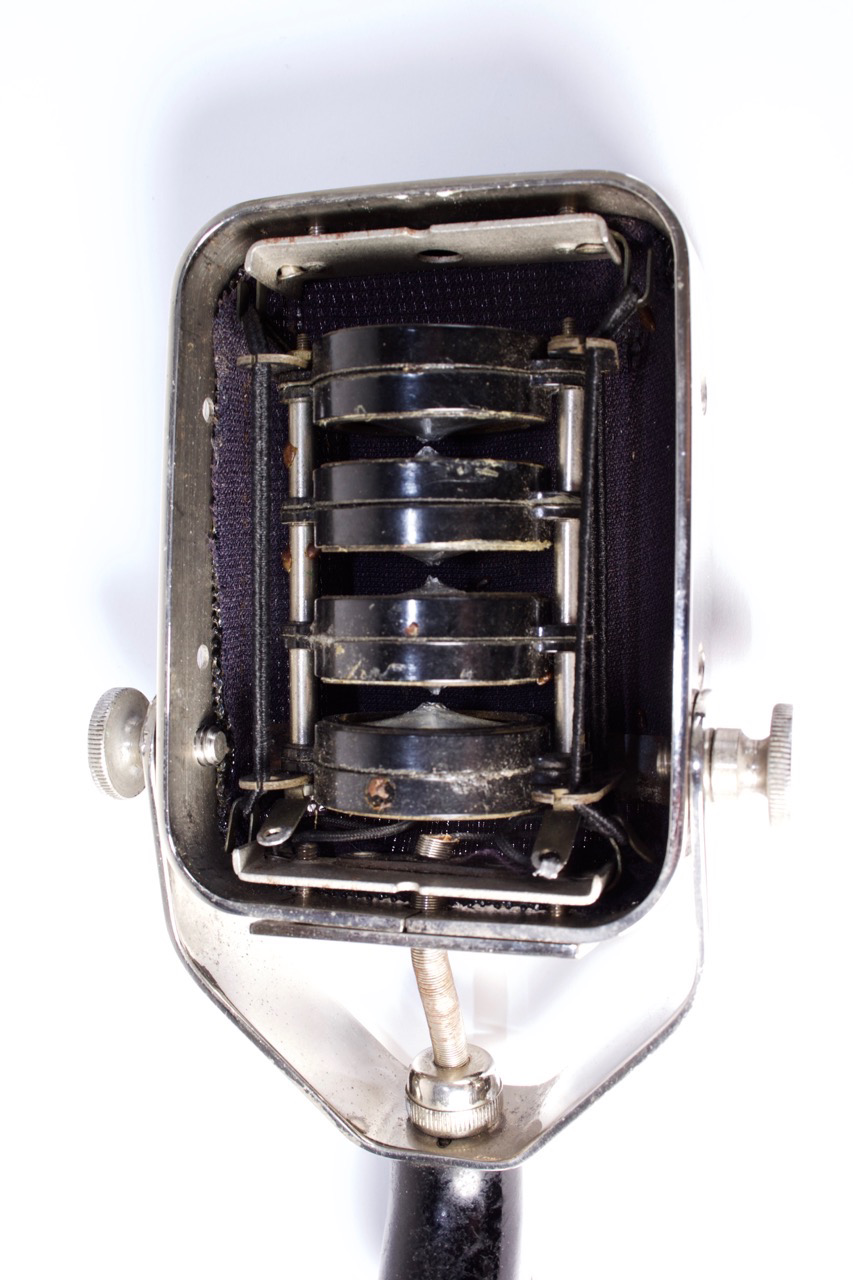|
If you want to immerse yourself in the Ronette universe, it is best to go to the Ronette page of Bert van Oortmarssen, he is the expert in this field and provides information about many of the different models, also from Belgium, Germany and France.
But since some Ronettes are sold as vintage studio microphones, lately, I would like to give some extra information about them, because these microphones were never intended for studio use. They are not suited for it, unless they are used as an effect microphone, for a different sound.
Earlier I reported on the most famous Ronette: the B110 'Reporter', a simple plastic microphone that was sold worldwide, in the fifties and early sixties.
Due to the success of this model, the company also wanted to focus on the lucrative sale of types of higher quality , but always equipped with a crystal element.
The top model was the R474, which had no fewer than four crystal elements, with eight membranes. This idea was first used by Astatic, for their WR40 model. There are many similarities between these brands.
By connecting the elements in parallel, a greater capacity was achieved, allowing better sensitivity and longer cables between the microphone and amplifier. For cable lengths up to 1.5 mile, output transformers were available.
Ronette advertised that the quality of their crystal elements was comparable to condenser mics, but that claim is nonsensical. In fact, the microphones were only good for public address and home use*).
The distinguished appearance was reminiscent of the much more expensive ribbon microphones, but that's where the comparison ends.
When good dynamic microphones, at a reasonable price, came on the market at the end of the sixties, the Ronettes disappeared from the picture.
German production under the names Merula and Schumann (the name of the German Ronette importer) also ended.
Oddly enough, Beyer made a dynamic microphone type D65, supplied for Dynaccord as D65, (or DD65 with controls for their tape echoes), which is similar in appearance to Ronette and Schumann types, and has exactly the same size. I presume the casings originated there.
*) According to a BBC report from 1956, the quality of the Ronette crystal elements was much better than the crystal elements that were produced in the UK.
These and many more types feature in my book Witnesses of Words. More information about that can be found at www.witnessesofwords.com

|
|
|
|
|
Top: the ribbon like look of the R474
Middle: side view showing it's pear shape
Below: sound, inside with 4 capsules, Dynacord DD65 & Ronette leaflet
|
|
|
 |
 |
|


 Video's
Video's Contact
Contact






